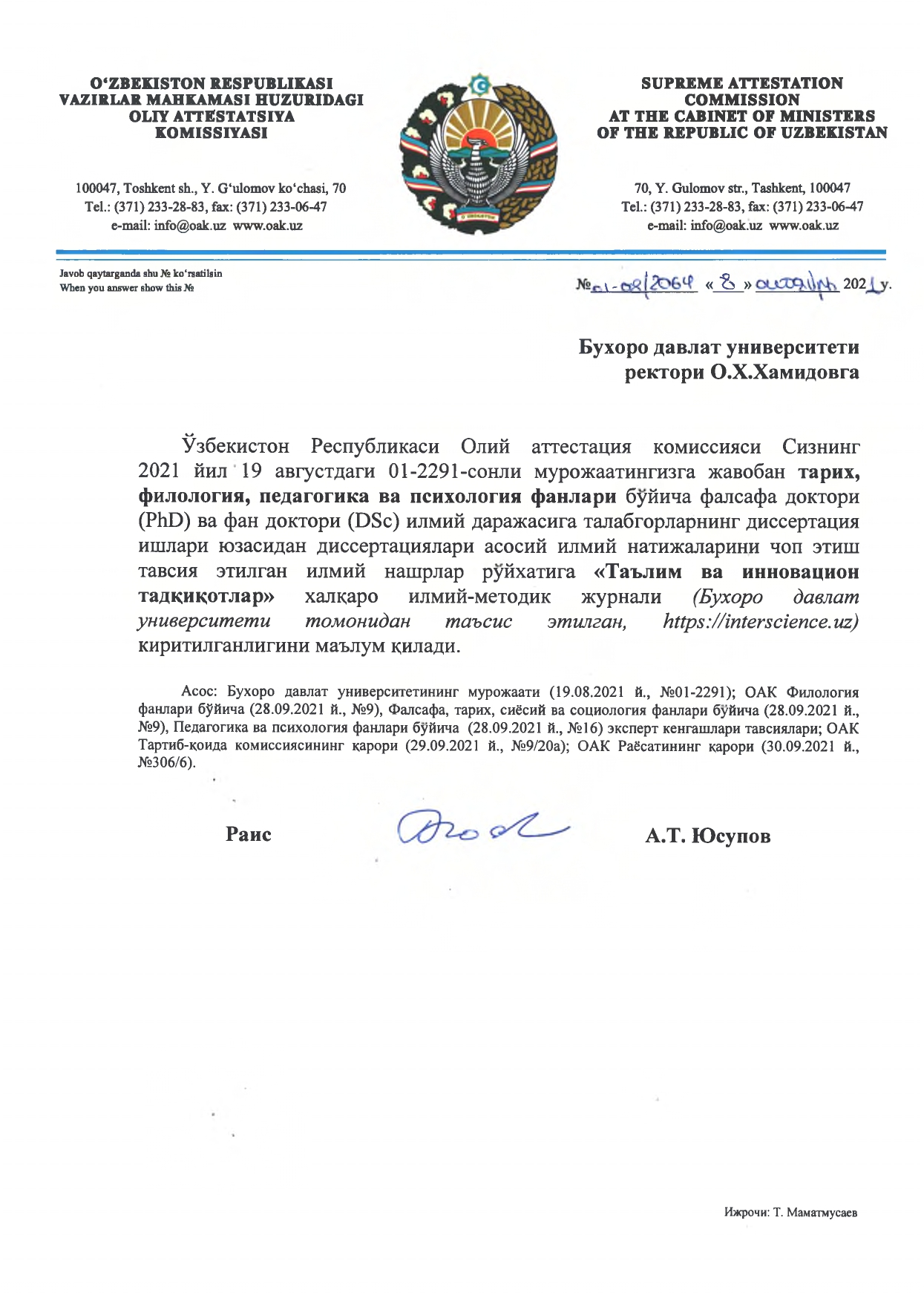IMKONIYATI CHEKLANGAN BOLALARNI O’QITISHDAGI USLUBIY VA DIDAKTIK YORDAM
Maloxat Komilova Toshkent amaliy fanlar universiteti, dotsent v.b.
Ключевые слова:
inklyuziv ta’lim, og’zaki, amaliy va vizual usullar, bolalarning analitik va sintetik faoliyati, tushuntirish-illyustrativ, reproduktiv; muammoli taqdimot va evristik usullar, grafik diktant, eshitish diktant, Mnemonika, vizual, sensorimotor asosАннотация
maqolada nogiron bolalarni o’qitishda uslubiy va didaktik yordamni qo’llash muammosi ko’rib chiqiladi. Bolalar bilan tuzatish va pedagogik ishlarning usullari o’rganilib, o’quv ma’lumotlarini talabalar uchun qulay shaklda to’liq etkazish, idrok etish, saqlash va qayta ishlashga yordam beradi. Turli yosh guruhlari bilan va turli sharoitlarda va darsning turli bosqichlarida qo’llanilishi mumkin bo’lgan faol o’qitish usullarini qo’llash, shuningdek, turli xil nogiron o’quvchilarning psixofizik rivojlanishidagi kamchiliklarni to’g’irlaydigan va asosan ularni tekislaydigan maxsus ishlab chiqilgan tuzatish va rivojlantirish mashqlari, texnikasi, o’yinlari va mashg’ulotlarini muntazam ravishda qo’llash. vazifalar natijada o’sish sodir bo’ladi
Библиографические ссылки
Применение наглядных методов в обучение в работе с детьми ОВЗ. https://uchitelya.com/ pedagogika/190927-primenenie-naglyadnyh-metodov-v-obuchenie-v-rabote-s-detmi-ovz.html
Степаненко С. Н. Дидактические требования к проектированию и реализации образовательного процесса для детей с ОВЗ
Ермакова П.П. Использование дидактических средств обучения для эффективного включения обучающихся с ОВЗ в активную познавательную деятельность
Strategies for teaching children with learning difficulties. https://www.ldrfa.org/strategies-for- teaching-children-with-learning-disabilities/
6 Strategies to Teach Children with Special Needs. https://www.educationtask.com/strategies-to- teach-children-with-special-needs.html
Т. С. Щёголева «Словесные методы обучения в специальной школе VIII вида».
Хуажева Б. А. «Формы и методы коррекционно-развивающего обучения для формирования связной речи учащихся с ОВЗ»
Комилова, М. О., Исканджанова, Ф. К., & Кахрамонов, А. (2024). ЭФФЕКТИВНОСТИ РЕАЛИЗАЦИИ ГИБРИДНОГО ОБУЧЕНИЯ. IMRAS, 7(1), 25-31.
Комилова, М. О. FAN, TA’LIM VA AMALIYOT INTEGRATSIYASI.
Комилова, М. О., Пулатова, Л., & Атажиев, Ш. М. (2023, June). ЦИФРОВАЯ ПЕДАГОГИКА КАК СРЕДСТВО, ПОЗВОЛЯЮЩЕЕ ПЕРЕВЕСТИ ПРОЦЕСС ОБУЧЕНИЯ НА БОЛЕЕ
КАЧЕСТВЕННЫЙ И ВЫСОКИЙ УРОВЕНЬ. In INTERDISCIPLINE INNOVATION AND SCIENTIFIC RESEARCH CONFERENCE (Vol. 1, No. 10, pp. 58-66).
Комилова, М. О., & Мирзаева, Г. А. (2023). АКТУАЛЬНЫЕ И ПЕРСПЕКТИВНОЕ МОДЕЛИРОВАНИЕ ЗАНЯТИЙ ИСПОЛЬЗУЯ, СМЕШАННЫЕ ТЕХНОЛОГИИ ОБУЧЕНИЯ В МЕДИЦИНСКОМ ОБРАЗОВАНИИ. Finland International Scientific Journal of Education, Social Science & Humanities, 11(5), 1681-1686.
Олимовна, К. М. (2023). ПОДХОДЫ «РОТАЦИЯ СТАНЦИЙ» В СМЕШАННОМ ОБУЧЕНИИ.





